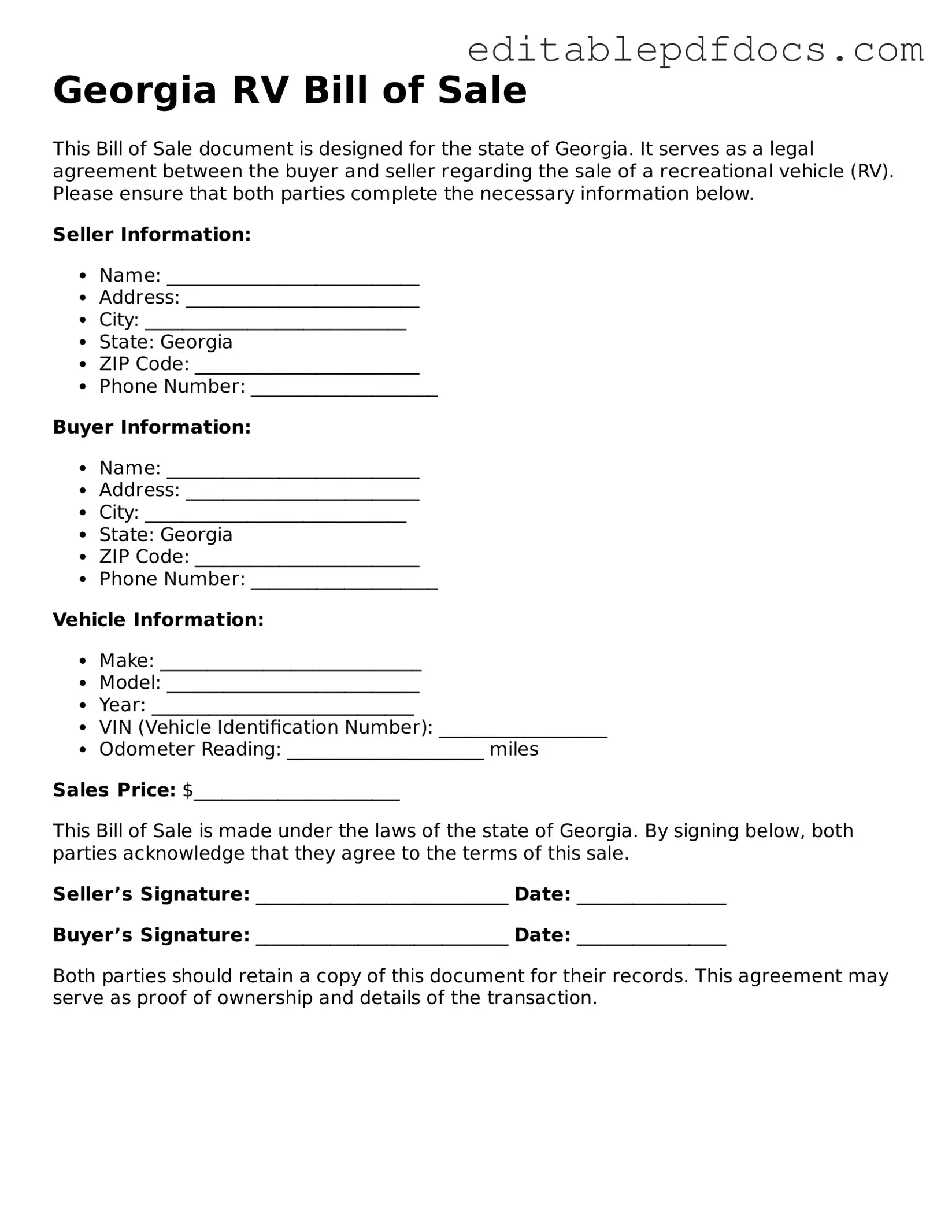Filling out the Georgia RV Bill of Sale form is a critical step in the process of transferring ownership of a recreational vehicle. However, many individuals make common mistakes that can lead to complications down the line. One frequent error is failing to provide complete information about the vehicle. The form requires specific details, such as the Vehicle Identification Number (VIN), make, model, and year. Omitting any of these details can create confusion and potentially complicate the registration process.
Another mistake often encountered is neglecting to include the names and addresses of both the buyer and the seller. This information is essential for establishing a clear record of the transaction. If either party's details are missing or incorrect, it could lead to disputes or issues with future ownership verification. Ensuring that all names are spelled correctly and addresses are up to date is crucial.
Many people also overlook the importance of the sale price. The form requires a clear statement of the purchase price for the RV. Failing to include this information or listing an incorrect amount can raise questions during tax assessments and may lead to legal complications. It's advisable to double-check the figures before finalizing the document.
In addition, signatures can be a point of contention. Both the buyer and the seller must sign the form to validate the transaction. Some individuals mistakenly think that only one signature is necessary, which can render the document ineffective. To avoid this pitfall, ensure that both parties are present to sign the form at the time of sale.
Another common error is not having the document notarized when required. While notarization is not always mandatory, it can add an extra layer of security and legitimacy to the transaction. Failing to notarize the Bill of Sale when it is recommended can lead to challenges in proving ownership later on.
Additionally, people sometimes forget to retain copies of the completed Bill of Sale. Keeping a copy for personal records is essential for both the buyer and the seller. This document serves as proof of the transaction and can be crucial if any disputes arise in the future. Without a copy, it may be difficult to resolve any issues that come up later.
Lastly, some individuals make the mistake of not reading the entire form before submission. Each section contains important information and instructions that can prevent future problems. Taking the time to carefully review the form can help identify any errors or omissions before it is submitted. A thorough understanding of the document can save both parties from potential headaches in the future.
